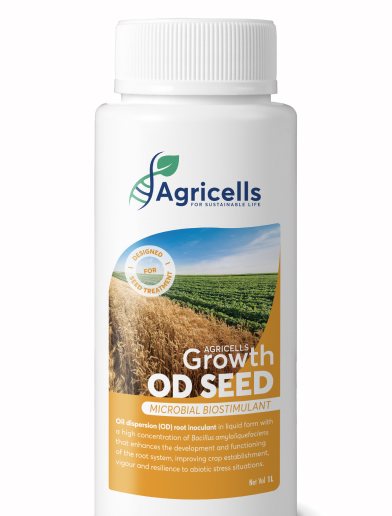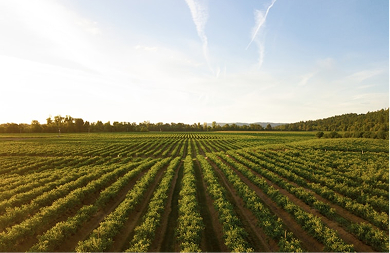Innovating for sustainable agriculture.
Agricells develops natural solutions based on microorganisms to reduce chemical inputs and enhance crop performance. From our biostimulants to our upcoming biocontrol solutions, we support the transition toward more responsible and resilient farming.


Rethinking
crop performance
We believe that sustainable agriculture relies on a balance between performance, profitability, and environmental responsibility. Our solutions support a smarter, more reasoned approach to farming, adapted to the needs of growers and distributors.
Productivity improvement
More vigorous plants and homogeneous crops.
Tailor-made solutions
Innovative formulations adapted to each type of culture and practice.
Commitment to sustainability
Products that reduce chemical inputs and promote responsible agriculture.
Our range of biostimulants
Our Agricells Growth® range is based on a unique microorganism, selected for its ability to stimulate plant growth and resilience. Available in several innovative formulations, our biostimulant adapts to all methods of application and is easily integrated into existing technical itineraries.
Agricells Growth®
OD PULV
Innovative liquid formulation adapted to all cultures.

Agricells Growth®
OD SEED
Innovative liquid formulation, specially designed for seed treatment.

Agricells Growth®
WP
Wettable powder to be diluted, suitable for all crops.

Want to learn more about our products?
Growers, technical advisor, and distributors, our team is here to answer your questions. Let’s talk!

Concrete results on the field
Our Agricells Growth® biostimulants have been tested by independent organizations across multiple crops and regions worldwide. The trials show significant improvements in plant vigor, root development, and yields, confirming the reliability of our solutions.
Up to
yield increase
depending on the crop

Up to
phosphorus uptake
more root hair density on average

Our research driving innovative biological solutions
At Agricells, our R&D team explores the potential of natural microorganisms and biological compounds to design the agricultural solutions of tomorrow.
We develop new biostimulants using our proprietary strain, and we are also preparing biocontrol solutions capable of protecting crops sustainably while reducing chemical inputs.
Design
Identifying agronomic needs and rigorously selecting the most promising strains and biological compounds.
Laboratory
Developing stable, high-performance formulations based on advanced biological technologies.
Field trials
Validating efficacy across multiple crops and diverse agricultural conditions.
Deployment
Supporting growers and distributors to ensure the smooth and long-lasting adoption of Agricells solutions.

Ready to take your agricultural practices to the next level?
Whether you're a grower, technical advisor, or distributor, feel free to reach out. We’d be happy to discuss your needs with you.








